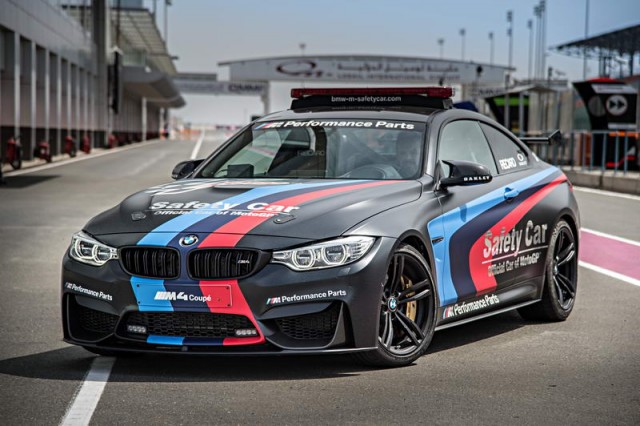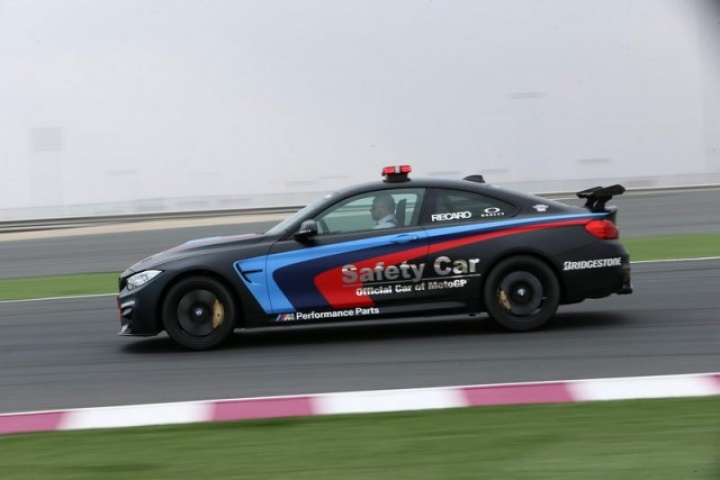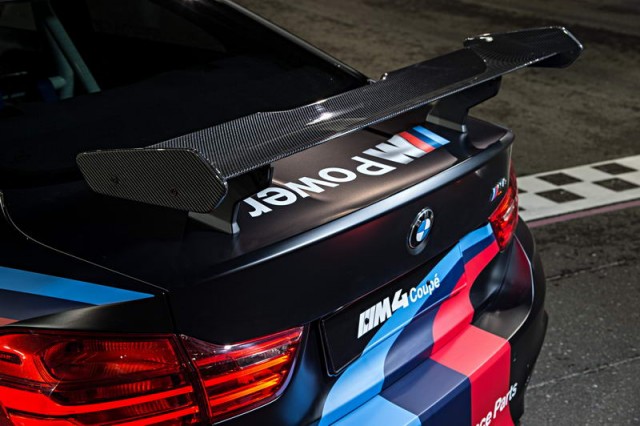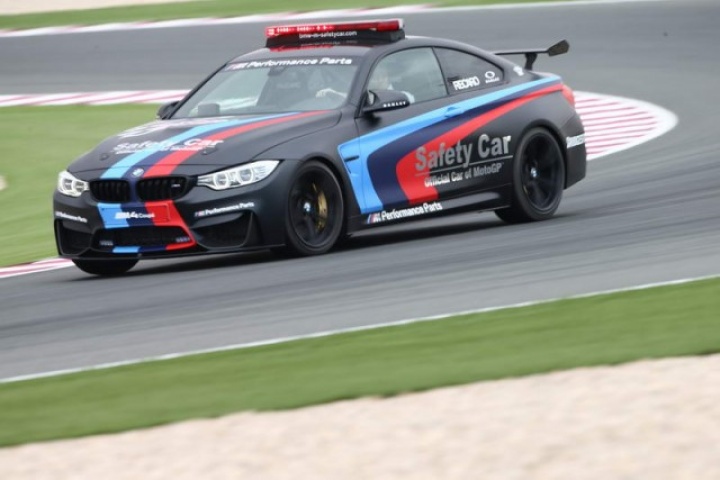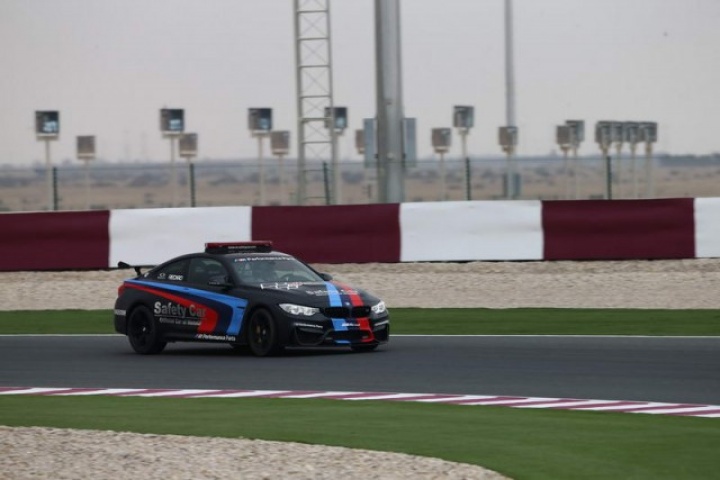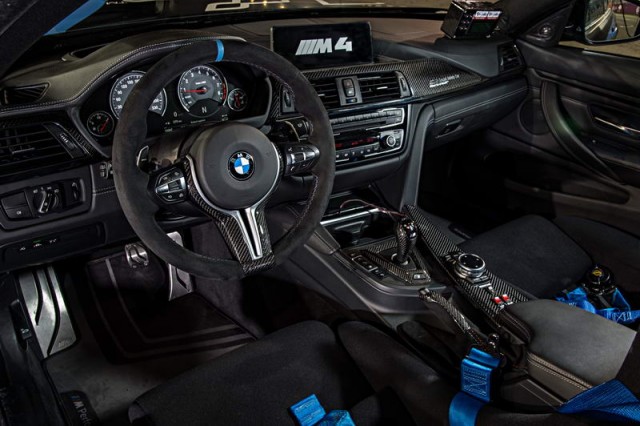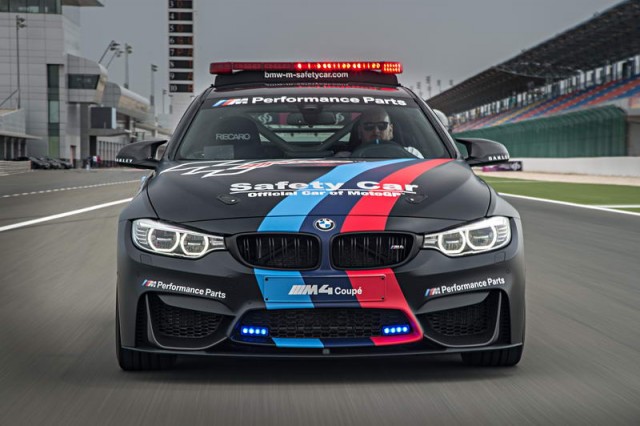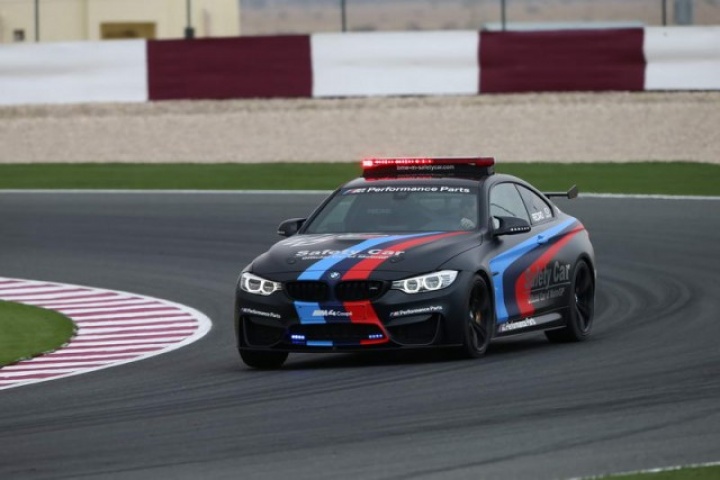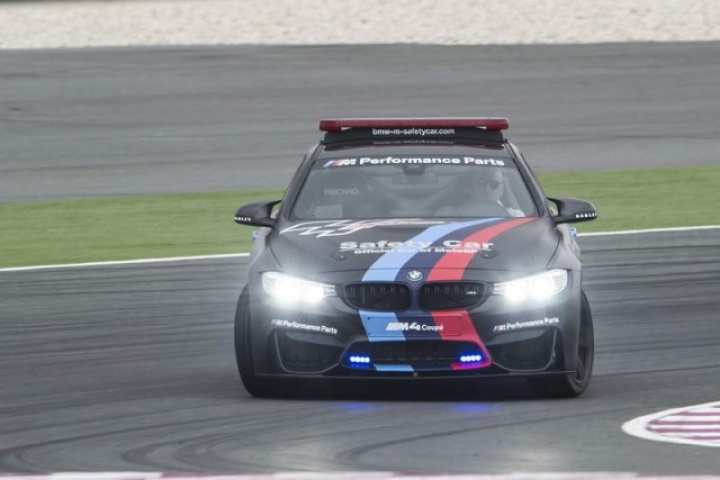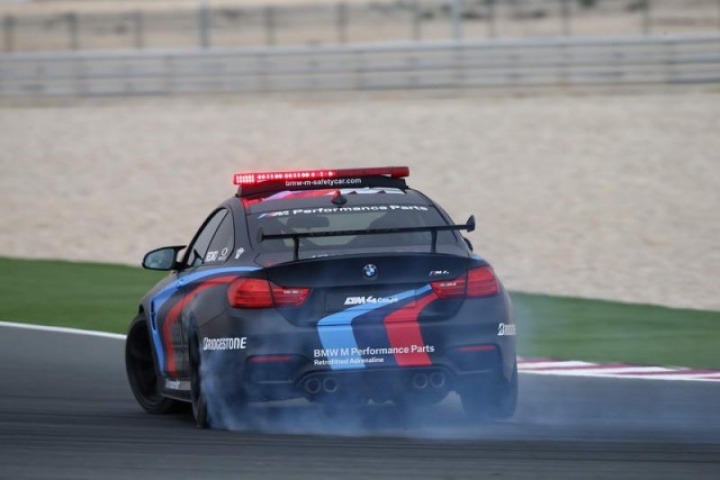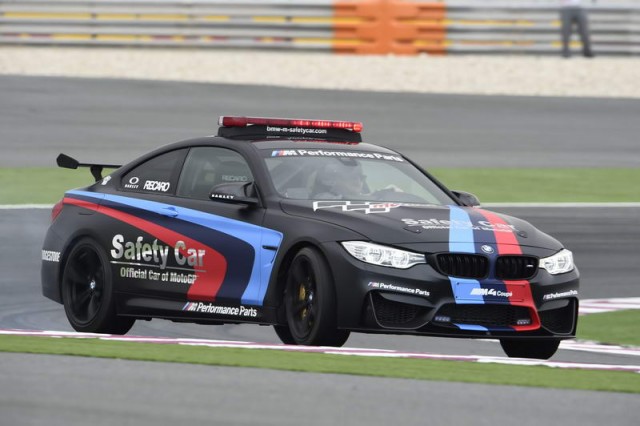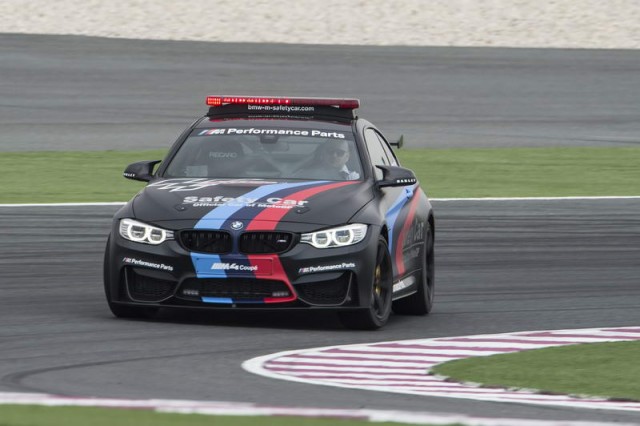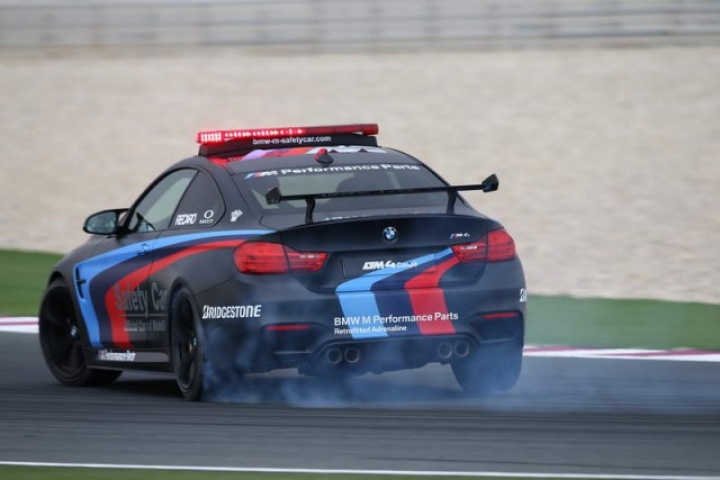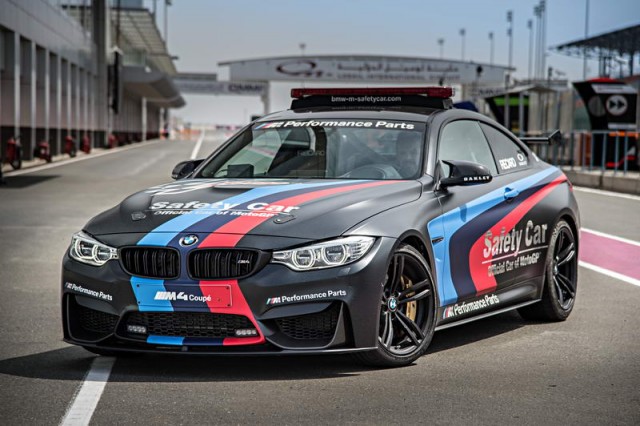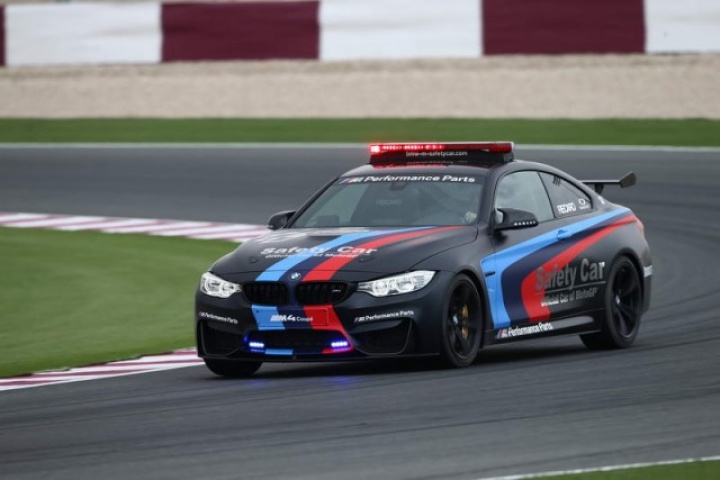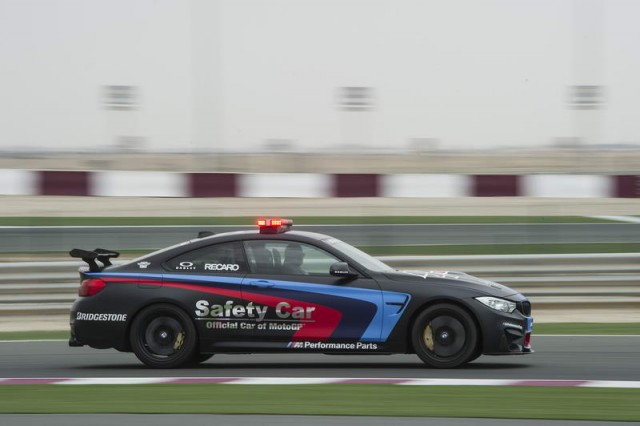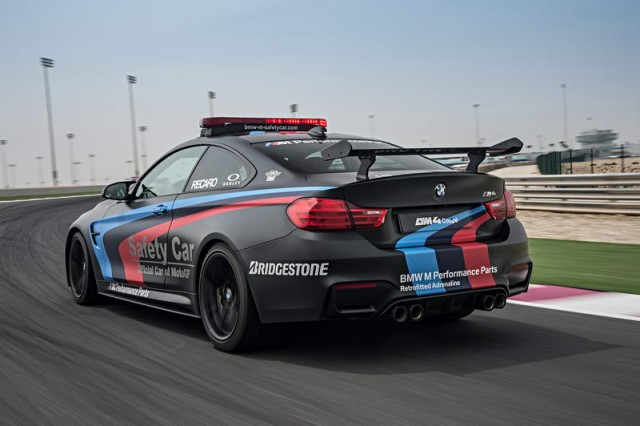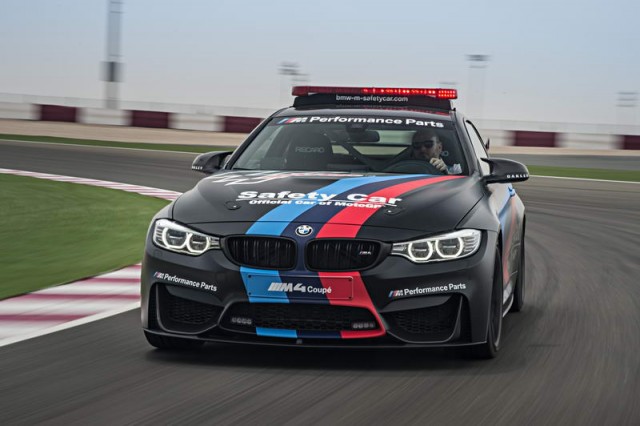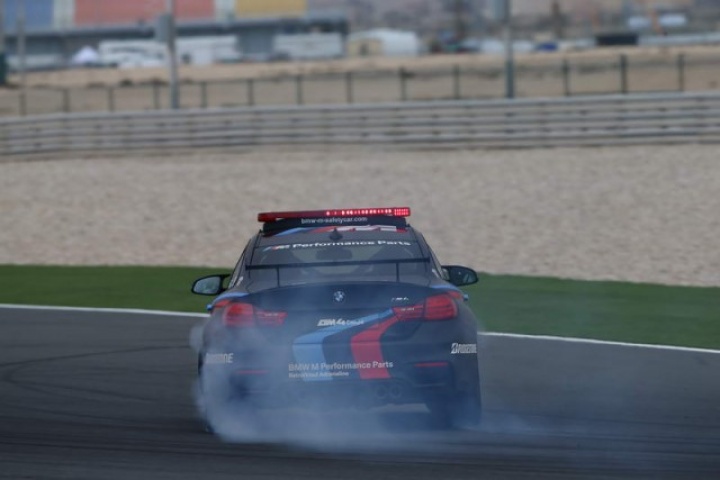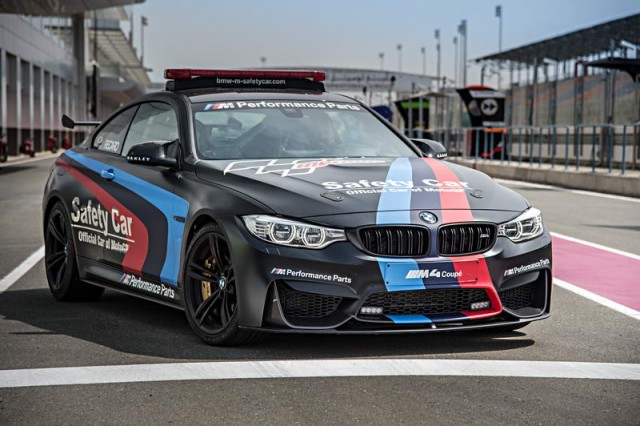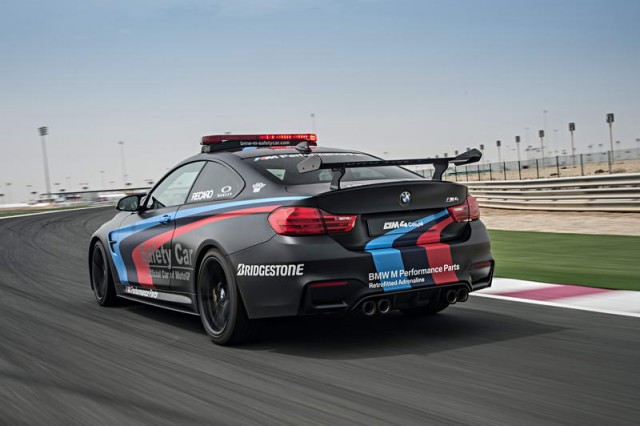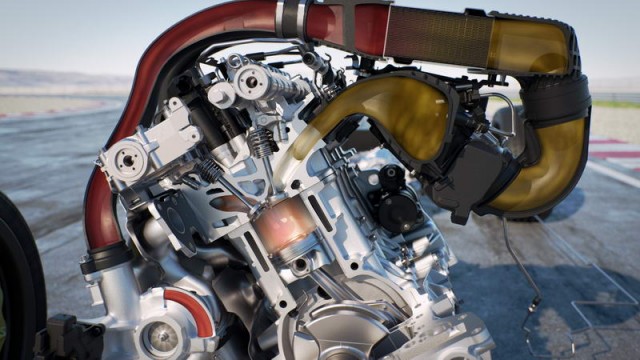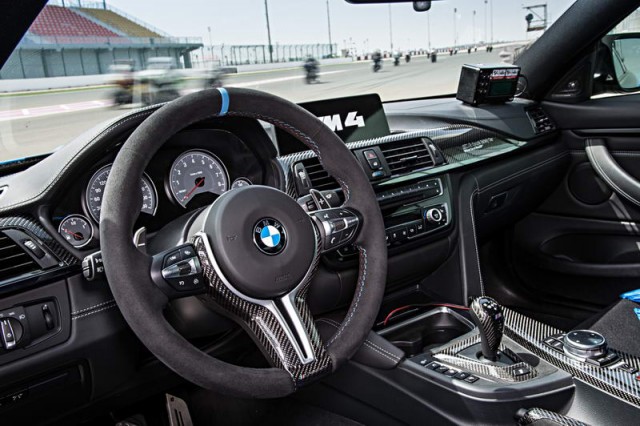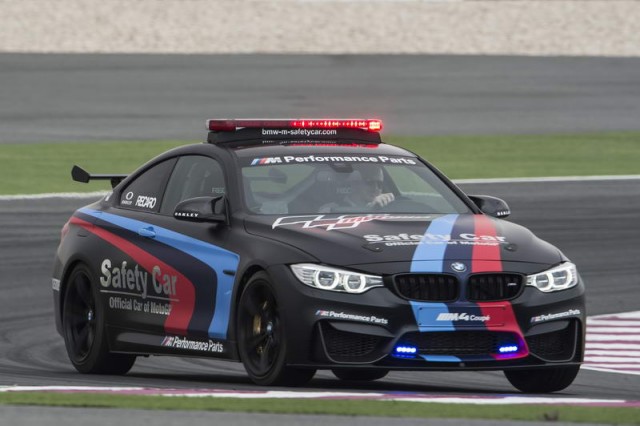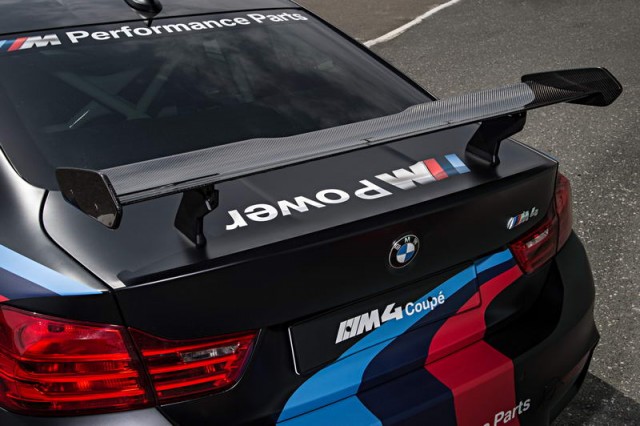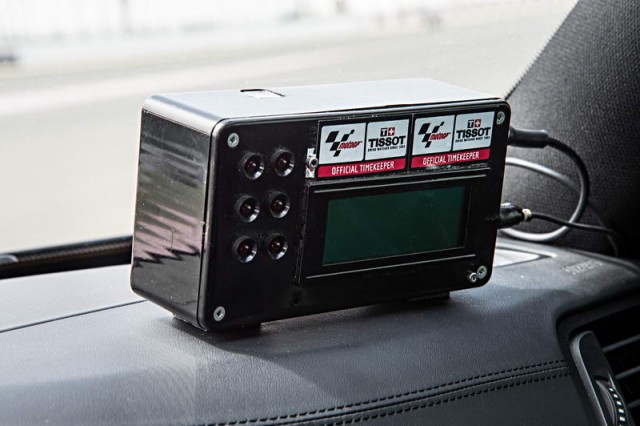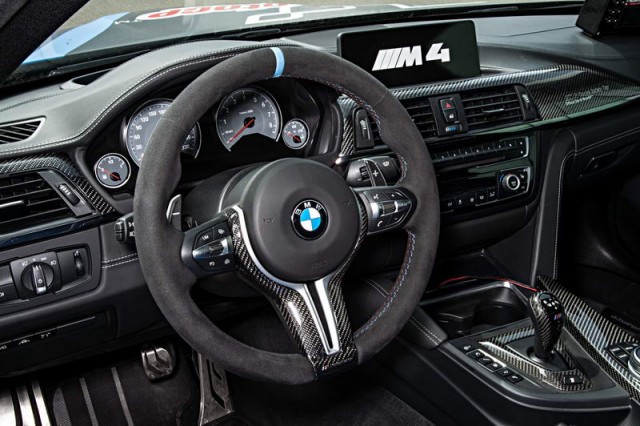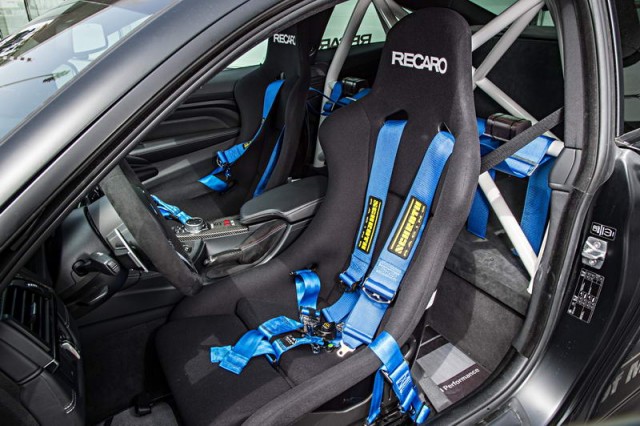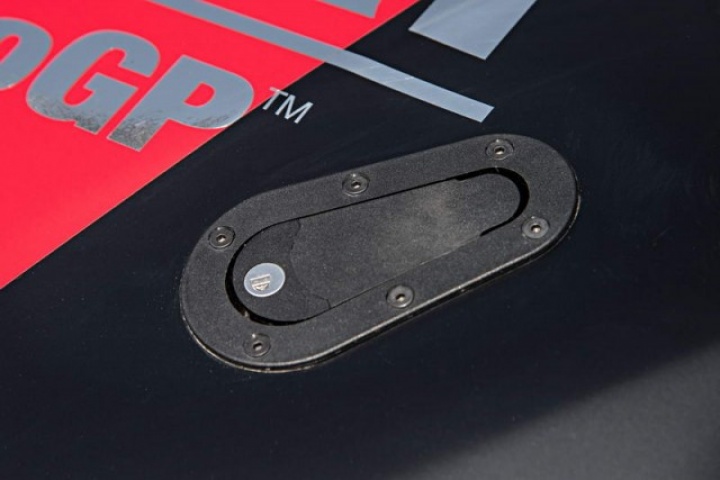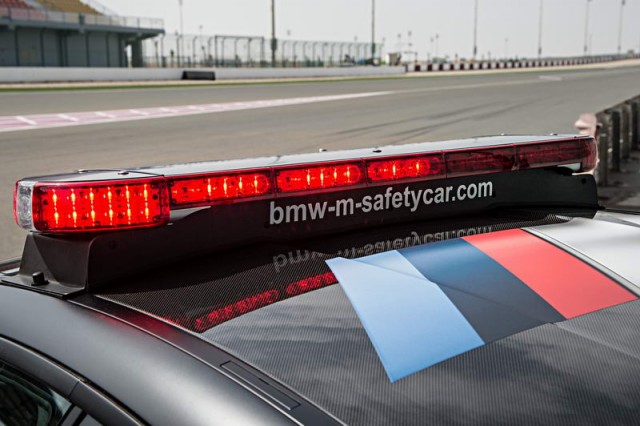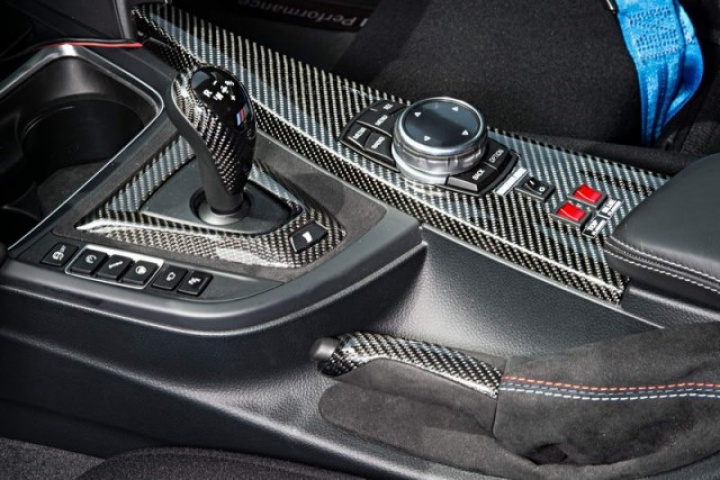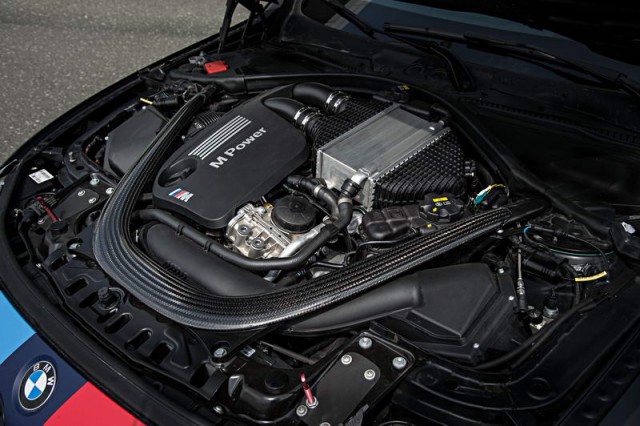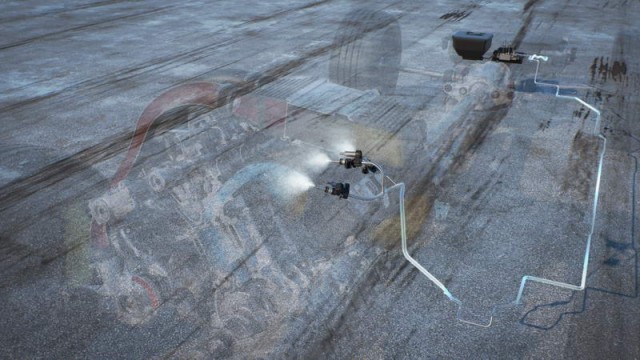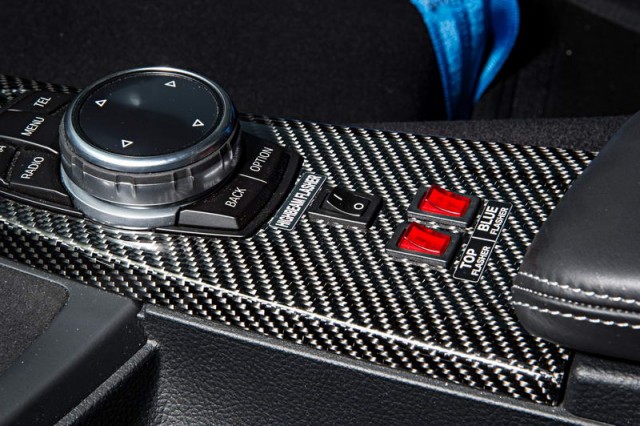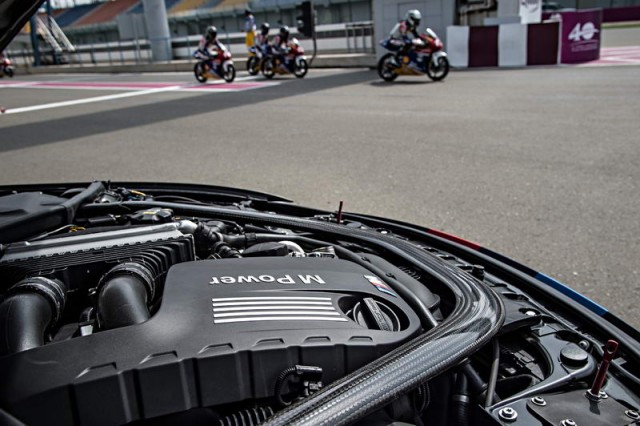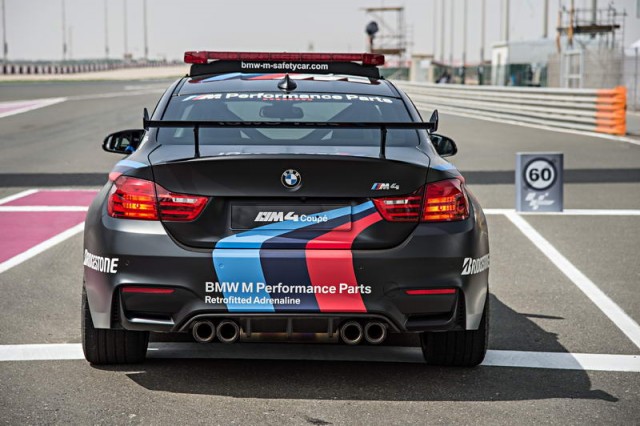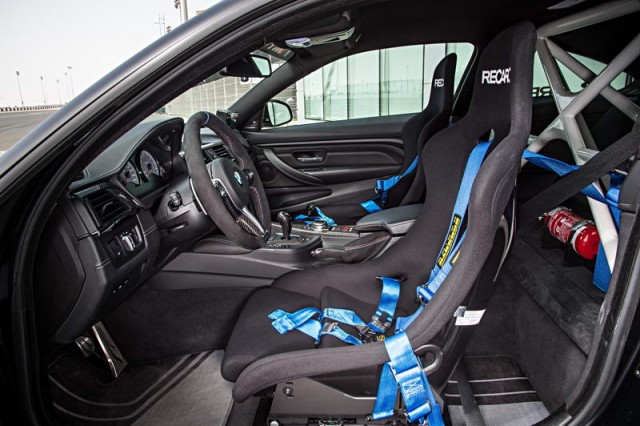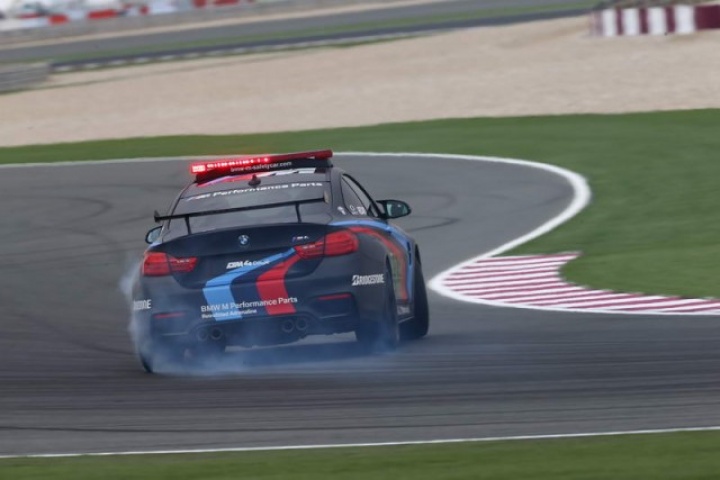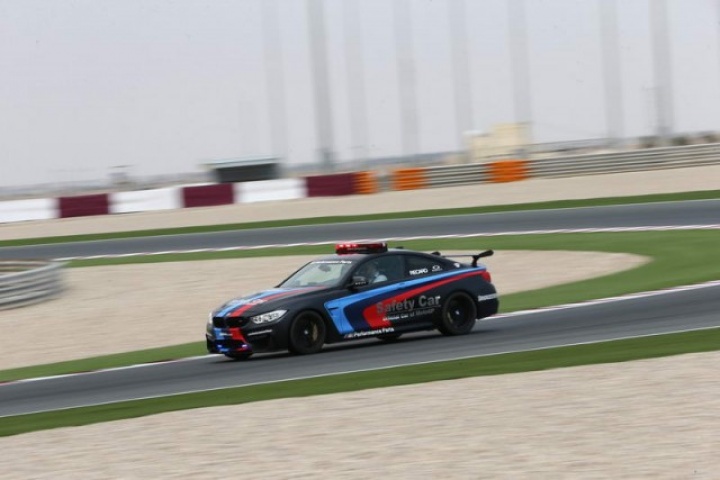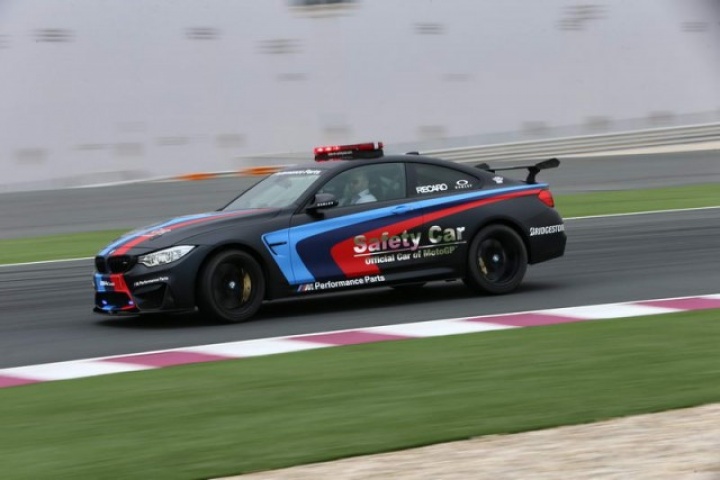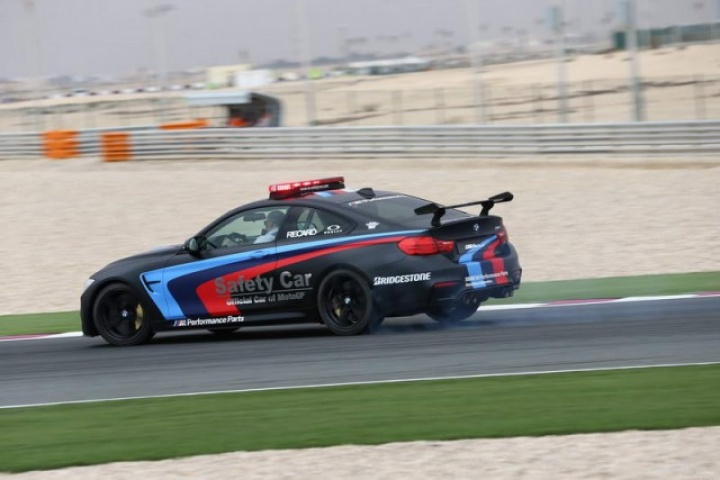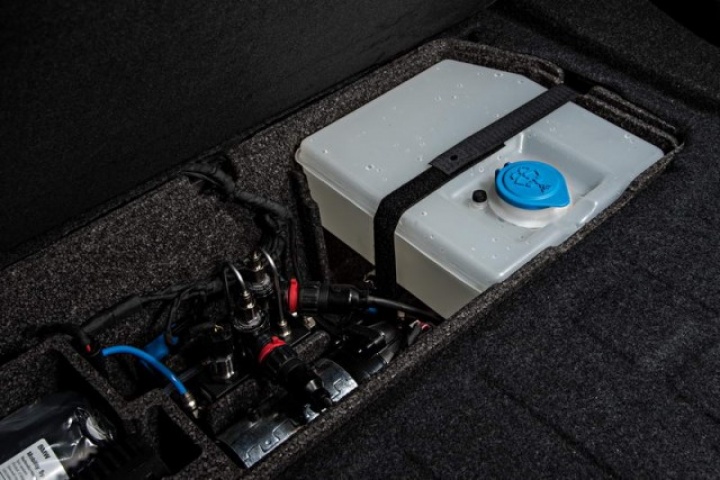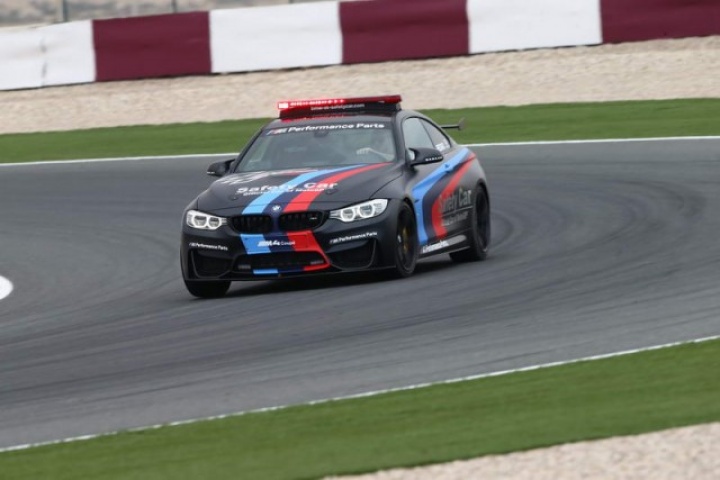Overall rating: 5/5
Flashing lights, a cage, revised suspension and plenty of stickers make the BMW M4 MotoGP Safety Car stand out, but its water-injected engine is the real highlight and it's coming to a production car very soon. Our quick drive in the one-off safety car reveals how special it could be.
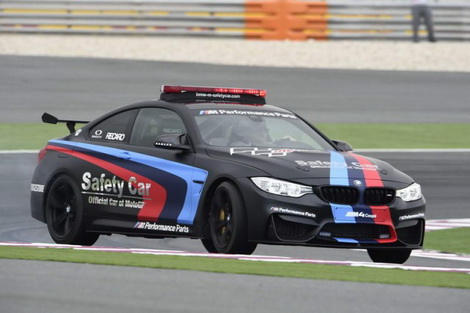
*standard M4 figures
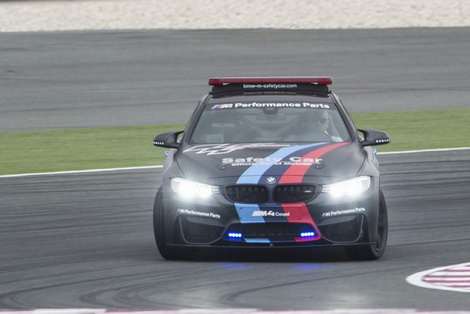
In the metal 5/5
BMW's M4 Coupe not obvious enough for you? Then bung a fed flashing light bar on the roof, revise the head- and tail lights to flash in synch with it and add some BMW M livery over a matte black finish. A noisier set of exhaust pipes helps, as do a few BMW M Performance parts like a lower front splitter, side skirts and a unique carbon-fibre rear wing. Bit extrovert for some perhaps, but then being seen is beneficial when your purpose is corralling a bunch of super talented MotoGP racers when they've got their race heads on and are approaching at speeds comfortably over 300km/h. The MotoGP Safety Car polices racing when someone's had an off and they need to slow things down for a bit - relatively speaking of course, as the M4 is used because it's a very fast car indeed.
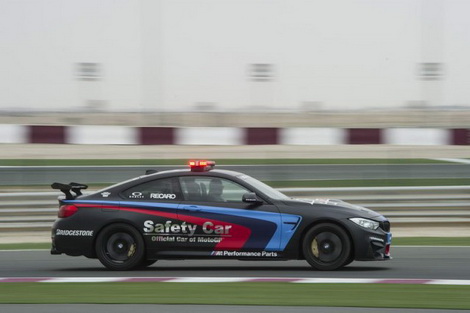
Inside, its track-focused role is immediately obvious. The standard seats are gone, replaced with a pair of Recaro buckets to which a set of six-point racing harnesses are fitted. The back seats have been binned altogether, a roll cage and fire extinguisher system placed back there instead. There are some other changes; the central screen's blanked with a crude M badge - so it doesn't interfere with the on-board camera on race day - while the extra lights are controlled by a bank of switches on the transmission tunnel. The two programmable M buttons have been set up by the Safety Car's usual driver, Mike La Fuente, the M1 setting having almost everything off and everything else dialled up to the maximum, while in M2 mode you're on your own, with all the stability and traction control systems turned off completely.
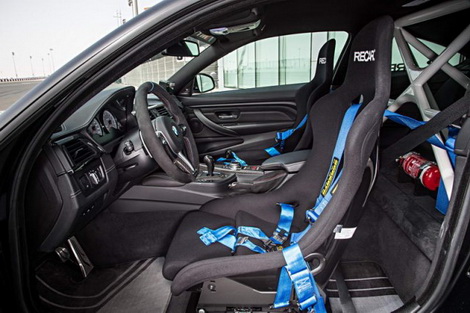
Driving it 5/5
The BMW M4 MotoGP Safety Car's most exciting tech isn't on display, as it's secreted away under the motorsport-pin released bonnet. The 3.0-litre twin turbo straight-six features water injection, a technology that was once tried in motorsport and quickly banned. A few tuners have played with it, but BMW M boss, Frank van Meel, admits he's surprised nobody's adopted the technology until now. Anyone with even a basic understanding of combustion will tell you that water and engines are a poor mix, as it cannot compress, so the water here is used pre-combustion in the turbocharging system. It's injected in a fine mist into the collection chamber, cooling the charge air, increasing its density and oxygen content, which in turn produces a bigger bang when it reaches the engine proper.
The effects are only apparently noticeable above 5,500rpm where the M4 produces its peak power. How much extra grunt the cooler charge air is adding to the mix is anyone's guess, though BMW officially says around eight per cent. M boss van Meel reckons that's conservative, as his engineers are still testing it, but he's convinced that the peak hp number might have swelled enough to see the standard 431hp output rise to one starting with a '5'. A 500hp M4? Yes please.
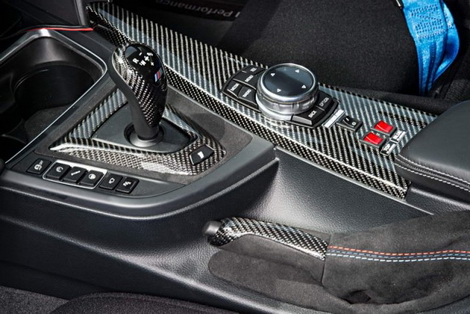
A short few hours before the Safety Car is needed for its day job, La Fuente's polite, but firm request is that we don't bend it on the five laps we're behind the wheel for. Chasing him in an X5 for a couple of familiarisation laps demonstrates that the water injection might not be doing its thing until 5,500rpm and above, but the straight-six's delivery feels less spiky than its road car relation. The additional force at higher revs is noticeable, though it's the engine's friendlier delivery that's more obvious when following an obviously out of its depth X5. Sighting laps done, that X5 peels off to the pits, leaving the Losail circuit in Qatar empty and free. The friendly, if sideways, nature of the M4 in M1 mode goads me into pressing the M2 button to see what happens.
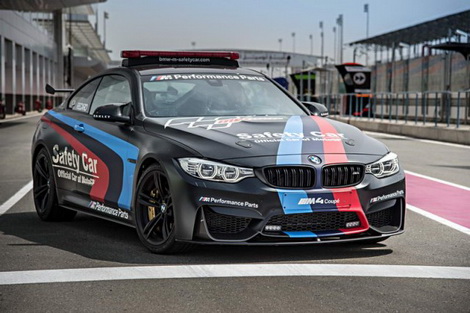
With its KW coil-over suspension the steering is crisper in its response, quicker, more accurate, even on the glass-smooth tarmac of the Losail circuit. Improved as the steering might be it's the even more mobile rear that's obvious, as the M4 can be steered almost exclusively by use of the accelerator. It'll break traction in any gear, though its behaviour is so benign and exploitable that it's hilariously good fun and easy to drive everywhere with corrective lock on the steering. Neat and tidy is possible if you're sensible, but the engine's mighty shove - across the entire rev range - and the more measured way it's delivered makes for a more exploitable, friendlier and more enjoyable BMW M4.
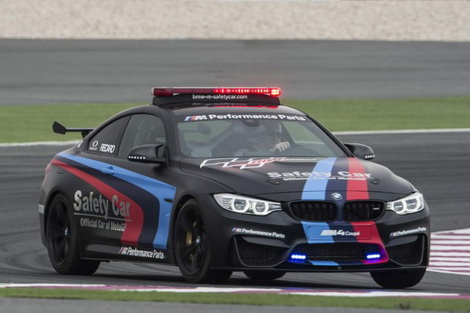
What you get for your Money
It's an experimental engine, so as it's not on sale yet we're not sure what the cost will be. That said, there have long been rumours of an M4 GTS, much like there was an M3 GTS previously. The M4 Safety Car is thought to be a not-to-subtle nod at how such a stripped-out, limited series production model could be. Van Meel's not saying as much, but he does admit that water injection will feature on a production car soon, and that it'll be in something 'special'.
Worth Noting
The benefits of water injection aren't just limited to adding power. The performance gains come hand-in-hand with economy benefits, the more thermally efficient engine producing less emissions and burning less fuel (comparatively speaking here, this is an M4 after all) at peak power. That's enough to ensure that the rest of BMW's engineers are banging at the M Division's door to apply the technology to a wider range of models, improving performance, economy and emissions by simply adding a five-litre tank to the boot and the necessary injectors and pumps to make it all work. It requires distilled water, though filling is simple enough, even if van Meel says that the Safety Car needs a fill every tank of fuel given its high work rate, but on a very hard-driven M4 road car you'd need a fill every fifth or so tank of fuel.
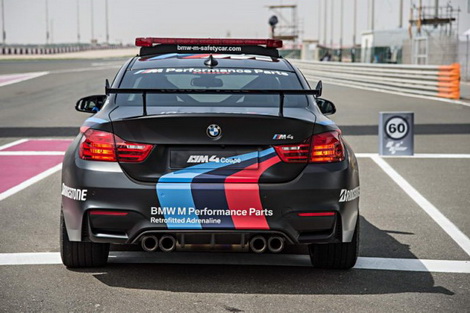
Summary
BMW M Division is giving its new water injection system a tough baptism at the head of a field of MotoGP racers, but the benefits are immediately obvious. Expect water injection to become a relatively common feature on not just BMW's M cars, but its series production models in the not too distant future.

